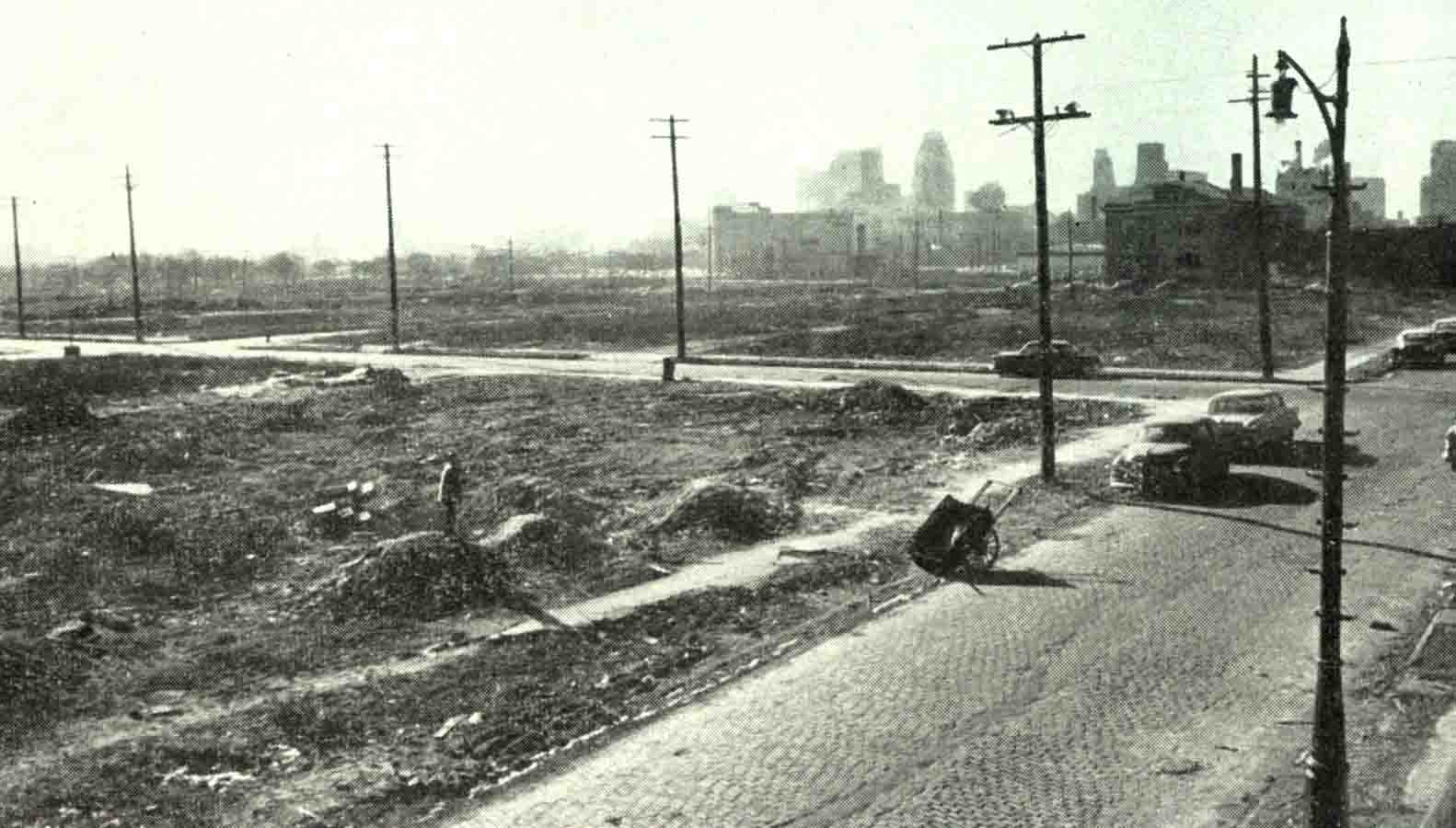The above photo is just one of several at Detroit's Great Rebellion documenting the slum clearance that went on after WWII in Detroit.
While Detroit's east side bore much of the chaos created by urban renewal, the west side was not spared he grief caused by the wrecking ball. Michigan Avenue during the1950s was every bit the eyesore of Black Bottom and every bit as dangerous the the Wild West. Along the darkened recesses of Michigan Ave.can be found a mystifying mixture of sleazy bars, pawn shops and flop houses that support the wretched refuse of men who have lost it all. Being a major thoroughfare of downtown Detroit, if the Model city was to shine like new money then skid row would have to go. Much like Black Bottom, the city would later find that getting ride of the eyesore didn't get ride of the people who formerly inhabited the area. Roughly speaking, they were just kicking the can a little further down the road. Many of these hard core people would simply move over to the 12th Street / Linwood / Dexter area and the very same problems of the 50s would re-materialize in the 60s.The politicians may have forgotten about the people, but the people didn't forget what had been done to them. People have a way of doing that.

The Detroit political elite seems to have believed that if they built shiny buildings, then shiny people would come to work in the city.
ReplyDeleteOr, more probably, it is easier and faster to skim money from building projects, federal grants, and bond offers than it is to reform regulation and encourage organic development under light taxes.
The middle class flees a corrupt city. The corrupt politicians also flee, after they loot.
EasyOpinions.blogspot.com